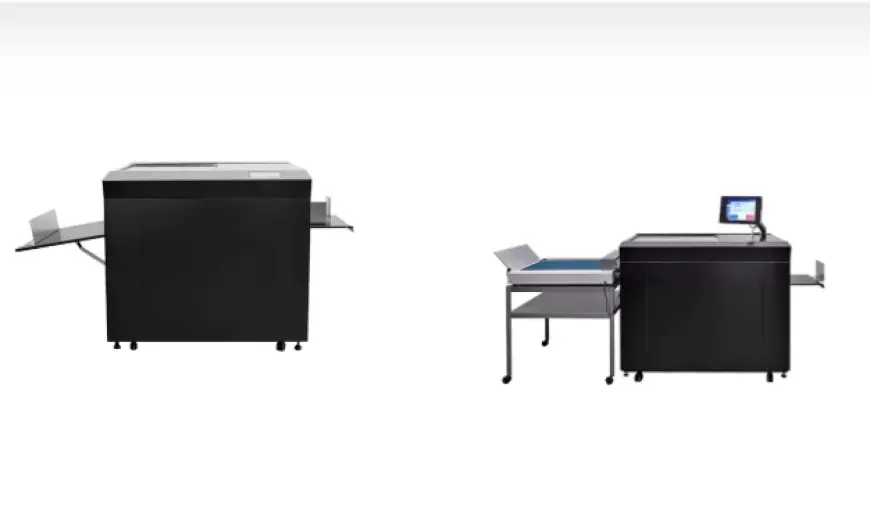How to Choose the Right Die Cutter for Your Business
Here’s a complete guide to help you select the ideal die cutter for your business needs.

In today’s competitive packaging, printing, and manufacturing industries, efficiency and precision are non-negotiable. A die cutter is a crucial investment that shapes your production capabilities and product quality. However, with various types, sizes, and technologies available, choosing the right die cutter can be challenging. Here’s a complete guide to help you select the ideal die cutter for your business needs.
1. Identify Your Business Requirements
Start by evaluating:
-
Production Volume: Determine how many units you need to cut daily or monthly. High-volume businesses benefit from automatic die cutters, while small-batch operations may only need manual or semi-automatic options.
-
Material Types: List all materials you plan to cut – cardboard, corrugated board, plastic, foam, vinyl, or specialty papers.
-
Design Complexity: Assess whether you require basic shapes, intricate patterns, window cutouts, or custom inserts.
Clearly defining your requirements narrows down the options suited for your operations.
2. Understand the Types of Die Cutters
There are three main types to consider:
-
Manual Die Cutters: Operated by hand, ideal for small businesses with low production volumes and basic designs.
-
Semi-Automatic Die Cutters: Combine manual loading with automated cutting, suitable for medium-volume production and businesses transitioning from manual processes.
-
Automatic Die Cutters: Fully automated, high-speed machines designed for large-scale manufacturing, offering fast turnaround times and reduced labour costs.
Choose based on your workload, workforce capacity, and budget.
3. Check Cutting Precision and Quality
Consistency is key in packaging production. Ensure the die cutter you choose:
-
Delivers high cutting precision, maintaining tight tolerances.
-
Produces clean edges without fraying or uneven cuts, especially important for premium packaging designs.
-
Is capable of handling detailed or intricate designs accurately.
Request sample cuts from manufacturers to assess machine precision before purchasing.
4. Evaluate Speed and Efficiency
Production speed directly impacts profitability. When reviewing machine specifications:
-
Check cutting speed (strokes per minute) for automated machines.
-
Assess setup and die changeover times for efficiency during multiple job runs.
-
Consider feeding and stacking systems that reduce manual intervention and speed up production.
Balancing speed with accuracy ensures optimal output without compromising quality.
5. Confirm Material Compatibility
Ensure the die cutter is compatible with all materials you plan to use, including:
-
Maximum and minimum thickness supported.
-
Specific materials such as corrugated cardboard, kraft paper, plastic sheets, or foam boards.
A versatile machine enables you to diversify your services and adapt to different client requirements.
6. Analyze Safety Features
Safety is critical in any manufacturing setup. Look for:
-
Emergency stop buttons
-
Safety guards and interlock systems
-
User-friendly control panels that reduce operator errors
These features protect your team and ensure compliance with workplace safety regulations.
7. Consider Maintenance and Durability
Your die cutter should be a long-term investment. Evaluate:
-
Ease of maintenance and cleaning procedures
-
Availability of spare parts and manufacturer support
-
Machine build quality and warranty terms
Machines with minimal maintenance requirements reduce downtime and maintenance costs over time.
8. Review Costs and Return on Investment
Assess:
-
Initial purchase cost vs. long-term operational savings
-
Labour cost reductions if upgrading to automated systems
-
Potential for increased output and expanded services to boost revenue
Calculate your return on investment (ROI) based on projected production volumes and business growth plans.
9. Research Manufacturer Reputation and Support
Before finalizing your purchase:
-
Check the manufacturer’s reputation through reviews and industry references.
-
Confirm availability of installation, operator training, and after-sales support.
-
Ask for client case studies or testimonials demonstrating reliability and support quality.
A reputable manufacturer ensures a smooth buying experience and reliable operational support.
Conclusion
Choosing the right die cutter is a strategic decision that influences your production efficiency, quality standards, and profitability. By understanding your business needs, evaluating machine specifications, and partnering with a reliable manufacturer, you can confidently select a die cutter that empowers your growth and keeps your operations running at peak performance.
What's Your Reaction?
 Like
0
Like
0
 Dislike
0
Dislike
0
 Love
0
Love
0
 Funny
0
Funny
0
 Angry
0
Angry
0
 Sad
0
Sad
0
 Wow
0
Wow
0


















































